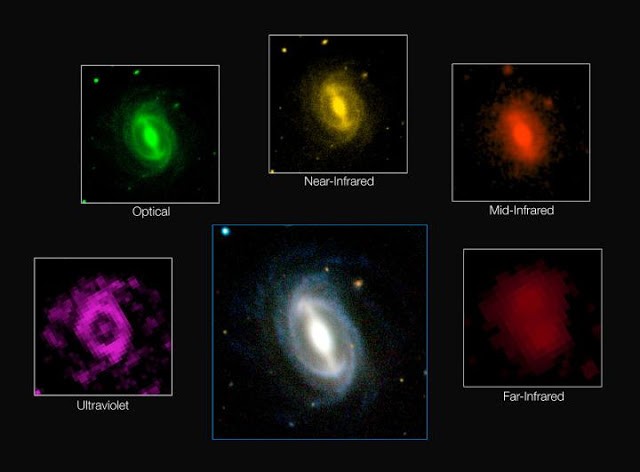| Online: | |
| Visits: | |
| Stories: |

| Story Views | |
| Now: | |
| Last Hour: | |
| Last 24 Hours: | |
| Total: | |
The Slow Death of the Universe Charted
An international team of astronomers studying more than 200 000 galaxies has measured the energy generated within a large portion of space more precisely than ever before. This represents the most comprehensive assessment of the energy output of the nearby Universe. They confirm that the energy produced in a section of the Universe today is only about half what it was two billion years ago and find that this fading is occurring across all wavelengths from the ultraviolet to the far infrared. The Universe is slowly dying.
The study, which is part of the Galaxy And Mass Assembly (GAMA) project, the largest multi-wavelength survey ever put together, involved many of the world’s most powerful telescopes [1].
“We used as many space and ground-based telescopes as we could get our hands on to measure the energy output of over 200 000 galaxies across as broad a wavelength range as possible,” says Simon Driver ICRAR, The University of Western Australia), who heads the large GAMA team.
This composite picture shows how a typical galaxy appears at different wavelengths in the GAMA survey. This huge project has measured the energy output of more than 200,000 galaxies and represents the most comprehensive assessment of the energy output of the nearby Universe. The results confirm that the energy produced in a section of the Universe today is only about half what it was two billion years ago and find that this fading is occurring across all wavelengths from the ultraviolet to the far infrared.

Credit: ICRAR/GAMA and ESO
All the energy in the Universe was created in the Big Bang, with some portion locked up as mass. Stars shine by converting mass into energy, as described by Einstein’s famous equation E=mc2 [2]. The GAMA study sets out to map and model all of the energy generated within a large volume of space today and at different times in the past.
“While most of the energy sloshing around in the Universe arose in the aftermath of the Big Bang, additional energy is constantly being generated by stars as they fuse elements like hydrogen and helium together,”" Simon Driver says. “This new energy is either absorbed by dust as it travels through the host galaxy, or escapes into intergalactic space and travels until it hits something, such as another star, a planet, or, very occasionally, a telescope mirror.”
The fact that the Universe is slowly fading has been known since the late 1990s, but this work shows that it is happening across all wavelengths from the ultraviolet to the infrared, representing the most comprehensive assessment of the energy output of the nearby Universe.
“The Universe will decline from here on in, sliding gently into old age. The Universe has basically sat down on the sofa, pulled up a blanket and is about to nod off for an eternal doze,” concludes Simon Driver.
The team of researchers hope to expand the work to map energy production over the entire history of the Universe, using a swathe of new facilities, including the world’s largest radio telescope, the Square Kilometre Array, which is due to be built in Australia and South Africa over the next decade.
The team will present this work at the International Astronomical Union XXIX General Assembly in Honolulu, Hawai`i, on Monday 10 August 2015.
Notes
[1] The telescopes and survey data used, in order of increasing wavelength, were: GALEX,SDSS, VST KiDS survey, AAT, VISTA VIKING survey UKIRT, WISE, Herschel (PACS/SPIRE).
[2] Much of the Universe’s energy output comes from nuclear fusion in stars, when mass is slowly converted into energy. Another major source is the very hot discs around black holes at the centres of galaxies, where gravitational energy is converted to electromagnetic radiation in quasars and other active galactic nuclei. Much longer wavelength radiation comes from huge dust clouds that are re-radiating the energy from stars within them.
Lars Lindberg Christensen
Source:





Its that damnable global warming! its killing EVERYTHING! Everyone turn on your air conditioners and SAVE THE UNIVERSE!!